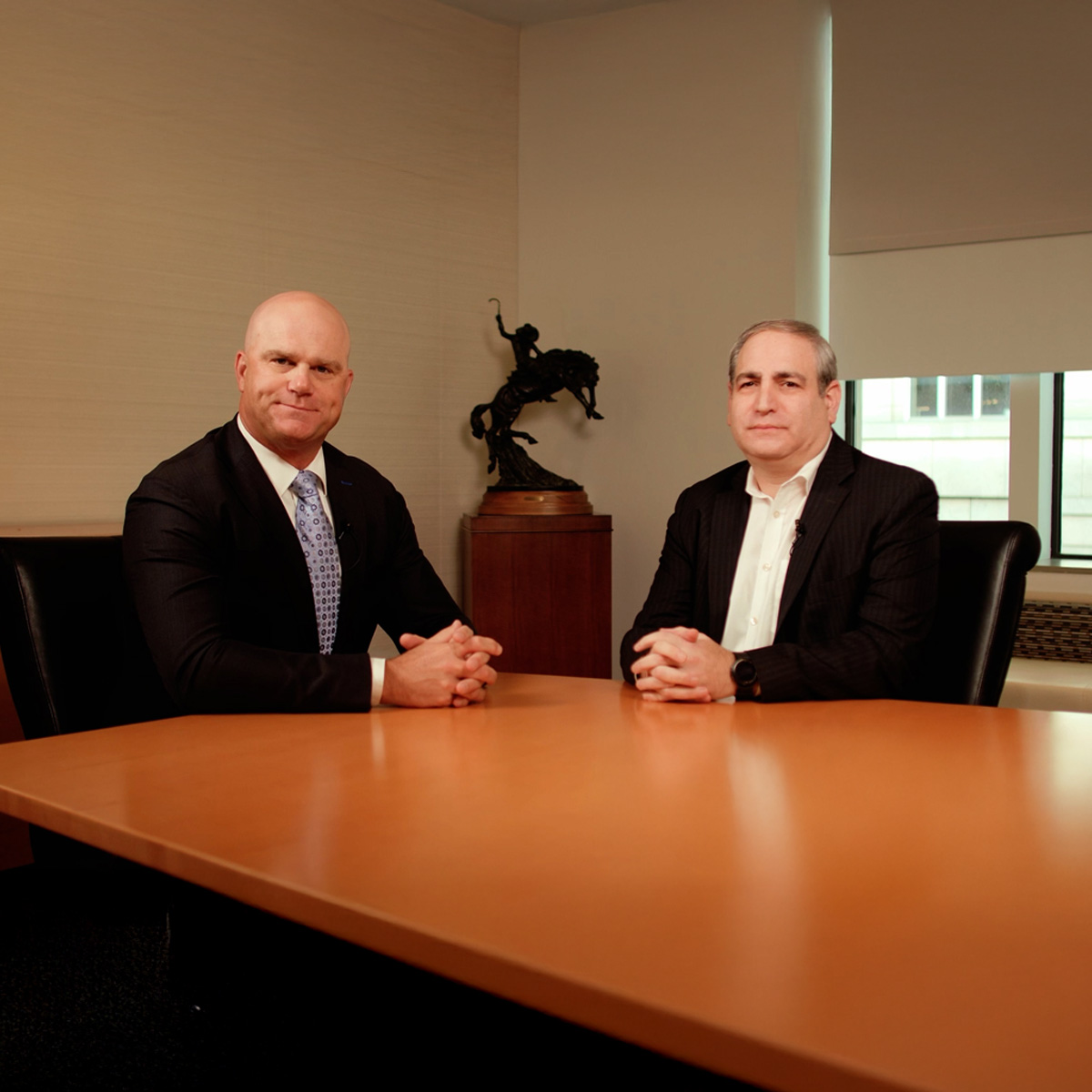.jpg)
October 8, 2025
Please enter the email address you used when registering.
If you have a valid account with us, you will receive an email with instructions to reset your password.
Please try again later.
In order to change your password, we need to verify your identity. We will send an authorization code to the email address on file.
Please enter the 6-digit code sent to your email. If you have not received a code, you may not have a registered account.
Please try again later.
Enter your password to login.
In order to change your password, we need to verify your identity. We will send an authorization code to the email address on file.
Enter the 6-digit code sent to your email
Please try again later.
In order to change your phone number, we need to verify your identity. We will send an authorization code to the email address on file.
Enter your password to login.
To verify your identity, we need to send an authorization code to the email address on file.
Enter the 6-digit code sent to your email
Please try again later.
We need a phone number to keep your account secure. We will send you a code to validate your phone number.
Please enter the email address you used when registering.
If you have a valid account with us, you will receive an email with instructions to reset your password.
Please try again later.
In order to change your password, we need to verify your identity. We will send an authorization code to the email address on file.
Please enter the 6-digit code sent to your email. If you have not received a code, you may not have a registered account.
Please try again later.
Enter your password to login.
In order to change your password, we need to verify your identity. We will send an authorization code to the email address on file.
Enter the 6-digit code sent to your email
Please try again later.
In order to change your phone number, we need to verify your identity. We will send an authorization code to the email address on file.
We have sent an email to {0}. Click the link in the email to finish setting up your dashboard
Please enter the email address you used when registering.
If you have a valid account with us, you will receive an email with instructions to reset your password.
Please try again later.
In order to change your password, we need to verify your identity. We will send an authorization code to the email address on file.
Please enter the 6-digit code sent to your email. If you have not received a code, you may not have a registered account.
Please try again later.
Enter your password to login.
In order to change your password, we need to verify your identity. We will send an authorization code to the email address on file.
Enter the 6-digit code sent to your email
Please try again later.
In order to change your phone number, we need to verify your identity. We will send an authorization code to the email address on file.


Our stable value funds seek to preserve capital and provide stability of principal for retirement plan participants. They're managed to be an attractive alternative to other capital preservation vehicles, earning current income that exceeds money market rates over the long term.

Offering a unique combination of benefits—including insurance guarantees—stable value funds can play an important role in a retirement plan investment lineup. Representing more than $841 billion of participant assets as of December 31, 2024,1 stable value funds are a defined contribution (DC) plan staple.
1 Stable Value Investment Association, as of 12/31/24.
Stable value funds are managed to achieve principal preservation, make returns more consistent, and provide liquidity for participant benefit payments.
Stable value fund managers invest primarily in short- to intermediate-term fixed-income instruments.
In funds where they're available, insurance guarantees can help stabilize performance.
Stable value funds use book value accounting to help smooth out daily market volatility. Plan participants and sponsors can count on the funds’ benefit responsiveness—the ability to transact at book or contract value.
of DC plans offer stable value funds2
of in-plan assets are invested in stable value funds3
of DC plan assets are held in stable value funds3
2 "2023 Investment Company Factbook," Investment Company Institute, 2022. 3 Stable Value Investment Association, as of 12/31/24.
Combining the cash flow potential of intermediate-duration bonds and the security of wrap contracts, stable value funds have historically generated higher returns with lower risk than other short-term/cash alternatives.
Source: Stable value is represented by the Morningstar Collective Investment Trust (CIT) Stable Value (SV) Index, part of the Morningstar SV CIT universe, which is an equal-weighted total return average across all participating funds and represents approximately 75% of the SV pooled funds available to the marketplace. Money market is represented by the FTSE 3-Month U.S. Treasury Bill Index, which tracks the performance of the most recent three-month U.S. Treasury bill issues. Ultra-short bonds are represented by the Bloomberg U.S. Short Treasury 9–12 Month Index, which tracks the performance of U.S. Treasury bills, notes, and bonds with up to, but not including, 12 months to maturity. Short-term bonds are represented by the Bloomberg U.S. 1-3 Year Treasury Bond Index, which tracks the performance of the U.S. government bond market and includes public obligations of the U.S. Treasury with a maturity between one and three years. Intermediate bonds are represented by the Bloomberg U.S. Aggregate Bond Index, which tracks the performance of U.S. investment-grade bonds in government, asset-backed, and corporate debt markets. It is not possible to invest directly in an index. Standard deviation is a statistical measure of the historic volatility of a portfolio. It measures the fluctuation of a fund's periodic returns from the mean or average. The larger the deviation, the larger the standard deviation and the higher the risk. Past performance does not guarantee future results.
© 2025 Morningstar. All Rights Reserved. The information contained herein: (1) is proprietary to Morningstar and/or its providers; (2) may not be copied or distributed; and (3) is not warranted to be accurate, complete, or timely. Neither Morningstar nor any of its content providers are responsible for any damages or losses arising from any use of this information.
Source: Morningstar Direct, 12/31/24. The Bloomberg U.S. Intermediate Government/Credit Index tracks the performance of intermediate-term U.S. government bonds, U.S. corporate bonds, and Yankee bonds. The Morningstar Collective Investment Trust (CIT) Stable Value (SV) Index is part of the Morningstar SV CIT Universe, which is an equal-weighted total return average across all participating funds and represents approximately 75% of the SV pooled funds available to the marketplace. The Morningstar US Money Market Index tracks the performance of U.S. securities and targets 97% market capitalization coverage of the investable universe. It is not possible to invest directly in an index. Past performance does not guarantee future results.
© 2025 Morningstar. All Rights Reserved. The information contained herein: (1) is proprietary to Morningstar and/or its providers; (2) may not be copied or distributed; and (3) is not warranted to be accurate, complete, or timely. Neither Morningstar nor any of its content providers are responsible for any damages or losses arising from any use of this information.
Over the past 15 years, the annualized total return provided by Stable Value strategies has exceeded those of money market funds. While intermediate-duration bonds are a key stable value investment component, the returns for Stable Value strategies have been similar to intermediate-duration bonds funds with significantly lower volatility.
In a period of high inflation and climbing interest rates, the structure, insurance guarantees, and active management of a stable value strategy can provide important advantages for DC plan participants and sponsors.
Source: CPI data, U.S. Bureau of Labor Statistics, 12/31/24. Fed refers to the U.S. Federal Reserve. The Morningstar Collective Investment Trust (CIT) Stable Value (SV) Index is part of the Morningstar SV CIT Universe, which is an equal-weighted total return average across all participating funds and represents approximately 75% of the SV pooled funds available to the marketplace. It is not possible to invest directly in an index.
Tax-exempt, pooled investment vehicles are maintained by a bank or trust company, and they’re available only to ERISA-qualified retirement accounts. They're exempt from many of the regulatory requirements that drive mutual fund expenses, generally giving them a fee advantage over mutual funds.4 Funds remain the property of the plans.
John Hancock’s pooled stable value funds are available to plans on both third-party and our own recordkeeping platforms.
Funds are managed by an insurance company to provide specified tax-qualified retirement benefits for a plan’s participants. The contract defines the benefit payment options and amounts the contract holder has purchased for each participant, which are payable from the insurer’s general account.
Our general account stable value fund is available exclusively to plans on John Hancock’s recordkeeping platform.
4 A Collective Investment Trust (CIT) is a pooled investment vehicle that is maintained by a bank or trust company for the collective investment of eligible qualified retirement plans. CITs are not publicly offered and may be purchased only by certain qualified retirement plans. CITs cannot be publicly marketed. CITs are not registered investment companies and are exempt from registration under the federal securities laws and are exempt from the regulatory requirements on mutual funds under the Investment Company Act of 1940; however, they are subject to federal and state regulation under the banking laws, the Employee Retirement Income Security Act of 1974, the Internal Revenue Code, and certain securities laws. A mutual fund is a publicly traded pooled investment fund that are offered through registered investment companies overseen by the US Securities and Exchange Commission. CITs are not subject to the regulatory, operational, reporting, and disclosure requirements of mutual funds. Administration, distribution, and marketing costs are generally lower than those for mutual funds as well.
|
Typical pooled or commingled stable value funds |
Typical general account stable value funds |
Investment objective |
Guarantee of principal and interest with liquidity and a stable return |
Guarantee of principal and interest with liquidity and a stable return |
Structure |
Collective investment trust or fund |
Insurance group annuity contract |
Guarantor/insurer |
Guarantees are provided by internal or external insurance companies or banks Typically referred to as wrap providers |
The insurance company issuing the group annuity contract and the associated guarantees |
Plan asset ownership |
Assets remain owned by the plan |
The insurance company owns the plan assets |
Underlying investments |
Transparent to the plan and typically consist of a diversified portfolio of high-quality fixed-income securities, including government, Treasury, mortgage, and/or corporate securities |
Plan assets are invested directly in the insurers general account; the insurer has discretion over the investment allocation and typically invests in a broad range of fixed-income and non-fixed-income securities |
Crediting rate (CR) formula |
Industry standard formula that factors in the yield, duration, and credit quality of the underlying investments and associated expenses with managing the portfolio |
Factors include, but are not limited to, the current interest-rate environment, the portfolio return from the general account, and the associated expenses for offering the fund |
CR reset period |
Typically, rates reset on a daily, monthly, or quarterly basis |
Typically, rates reset on a quarterly, semiannual, or annual basis |
Average target duration |
Typically 2 to 4 years |
Typically 3 to 8 years |
Minimum CR |
Typically not stated; however, wrap contract CRs cannot fall below 0.00% |
Minimum guarantee rates vary by contract but are typically between 1%–2% |
Fee disclosure |
Fees are stated and fully transparent to participants |
Fees are less transparent as certain or all fees are taken out of the spread portion of the fund |
Participant-level liquidity |
Typically benefit responsive, certain funds have caps on participant withdrawals |
Typically benefit responsive, certain funds have caps on participant withdrawals |
Proper and diligent investment selection and oversight are crucial to successful stable value management. John Hancock’s process features:
Each strategy is served by a dedicated research analyst. Together, they bring over 60 years’ experience to the role.
Our oversight includes quarterly reviews of portfolio performance, positioning, and characteristics—and annual due diligence meetings with each manager.
Our process includes multiple governance and oversight committees with voting members from our senior leadership team.

Learn more about our unique approach.
As skilled and experienced specialists in stable value and other capital preservation strategies, we partner closely with financial professionals and consultants to optimize this crucial aspect of the DC plan investment mix.


David is responsible for the management of over $6B of Stable Value assets through the John Hancock Stable Value Fund, John Hancock Stable Value Return Trust, John Hancock Stable Value Guaranteed Income Fund offered to full service 401(k) plans and John Hancock Fixed Income Fund offered to John Hancock employees through their own 401k plan. He's been in the stable value industry since 2012 and joined John Hancock in 2003. David is a voting member of the Stable Value Investment Association as well as the executive vice-president of John Hancock Trust Company and is responsible for our CIT funds as part of his role as head of institutional and retirement investment products. Prior to 2012, David managed strategic enterprise initiatives in the United States, Canada, and Asia for John Hancock and Manulife and was responsible for high-net-worth clients and financial advisors for our variable annuity business. He earned a B.A. in Political Science from Muhlenberg College.

Michael is responsible for positioning, promoting, and supporting John Hancock Stable Value Funds. His responsibilities also include performance monitoring, product training and sales support, oversight of the day-to-day operations of the funds, and representing the Stable Value Funds at cross-functional working group meetings. Michael joined John Hancock in 2006, and he earned an M.B.A. from Babson College and a B.S. in Marketing from Franklin Pierce University.

Jeff is responsible for managing and overseeing all aspects of the day-to-day operational items across John Hancock stable value funds. His responsibilities include calculating performance and fund metrics, managing cash flows, managing audit requirements, and supporting the head of stable value with any ad hoc requests. Jeff joined John Hancock in 2010, and he earned a B.S. in Accounting and Finance from the University of New Hampshire.

Warren is responsible for the day-to-day operational items for John Hancock Stable Value Fund and Fixed Income Fund. His responsibilities include managing cash flows, tracking and updating performance and managing the stable value team inbox. Prior to his role on the stable value team, he was an internal wholesaler with John Hancock U.S. Retirement. Warren graduated from Providence College in 2017 with a B.S. in Marketing. He has been with John Hancock for 6 years.

Jason is the director, head of the retirement investment specialist team at John Hancock, working exclusively with John Hancock Retirement to provide support in the use of John Hancock funds on John Hancock 401(k) plans. He's also a member of the stable value team within John Hancock Investments, acting as a subject matter expert and head of distribution for the team. Prior to these roles, Jason spent 10 years on the DCIO team at John Hancock Investment Management working with John Hancock Retirement and prior to that worked for another 10 years within John Hancock Retirement, his last role as the senior manager of the investment research and strategy team. This unique career history makes Jason conversant in many aspects of the 401(k) landscape, both in a broad sense and specific to John Hancock.
Jason has worked in the financial services industry for over 20 years. He started with John Hancock in 2005 within its investment management services team moving over to the Retirement Plan Services division in 2007. Jason received a B.A. in History and Sociology from the University of Maryland in 1994, an M.B.A. with a concentration in Finance from Boston College in 2005, and has earned both the CRPS and CIMA designations. Prior to working at John Hancock, Jason worked at SSgA as an index fund analyst.
.jpg)
October 8, 2025
.png)
December 21, 2022

April 10, 2024
Financial professionals and plan sponsors: Talk to an investment-only specialist about the role stable value funds play in a plan investment lineup, how they measure up to other capital preservation options, and our approach.
* indicates a required field
Thank you
Your submission was successful
CITs
Stable value portfolios typically invest in a diversified portfolio of bonds and enter into wrapper agreements with financial companies to prevent fluctuations in their share prices. Although a portfolio will seek to maintain a stable value, there is a risk that it will not be able to do so, and participants may lose their investment if both the fund's investment portfolio and the wrapper provider fail.
This information does not constitute an offer to sell units of any collective investment trust (“CIT”) and the trust is not soliciting offers to buy units of the CIT at any time in any jurisdiction where the offer or sale is not permitted. Units of a CIT are only offered to eligible qualified employee benefit plans in the sole discretion of the trustee. All information contained herein is qualified in its entirety by information contained in each CIT’s offering documents. An investor should consider a CIT’s investment objectives, risk, charges and expenses carefully before investing. Please read the offering documents, including an Offering Memorandum, Declaration of Trust, Participation Agreement and/or Fund Declaration, as applicable, copies of which are available to qualified investors upon request from John Hancock Trust Company or Global Trust Company (John Hancock Stable Value Fund). The trust document may only be available in English.
John Hancock CITs (except John Hancock Stable Value Fund Collective Investment Trust) are maintained and distributed by John Hancock Trust Company, a New Hampshire non-depository trust company. The John Hancock Stable Value Fund Collective Investment Trust, which is maintained by Global Trust Company, the fund’s trustee, a non-depository trust company organized under the laws of the State of Maine. John Hancock Investment Management Distributors LLC acts as the placement agent for Class I shares of the John Hancock Stable Value Fund Collective Investment Trust. John Hancock Investment Management Distributors LLC is a broker-dealer registered with the U.S. Securities and Exchange Commission and a member of the Financial Industry Regulatory Authority, Inc., and SIPC.
The CITs are offered through unaffiliated and affiliated retirement plan recordkeeping platforms. John Hancock Trust Company is affiliated with John Hancock Retirement Plan Services LLC, which offers administrative and/or recordkeeping services to sponsors and administrators of retirement plans. The Trust is also offered through group annuity contracts and recordkeeping agreements issued by John Hancock Life Insurance Company (U.S.A.), Boston, MA (not licensed in NY), and John Hancock Life Insurance Company of New York, Valhalla, NY.
John Hancock Trust Company
197 Clarendon Street, Boston, MA 02116 800-225-6020
Global Trust Company
2 Gill Street #2600, Woburn, MA 01801 781-970-5034